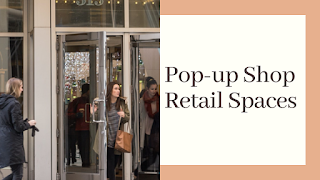Financial Planning For Pop Up Shops
Budgeting For Pop Up Shop Retail Spaces
Pop-up stores are a type of temporary retail business operation that have been lucrative to many. They are organised by international luxury brands, giant retailers, digital native sellers and even small street storefronts. While some pop up shop retail spaces are set up to carry budget campaigns for brand promotions, others are successfully used as testers to launch new business ventures.
Irrespective of the business size, financial planning is an extremely important element for success. For pop-up shops, a budget is made depending upon the duration of the pop-up shop. If there are significant differences between the actual and estimated figures, then, some more contributing factors need to be brought in. For instance, if there are not sufficient sales, the pop-up retailer may need to rework on the marketing techniques.
Costs Structure Of A Pop-Up Shop
- Cost of Goods Sold (COGS)
COGS refers to the cost of manufactured or purchased goods that are then sold. COGS is considered as a business expense and affects how much profit a business makes on its products.
- Operating Expenses
Operating expenses is the cost required to run a business. Operating expenses can be of two types: fixed expenses and variable expenses. Fix expenses do not change with the volume of the business. For example: rent of pop up shop retail spaces, licenses/permits, insurances, staff salaries, and depreciation cost of equipment. Variable expenses are the expenses that change with the volume of the business, such as costs of advertisements and promotions, internet, telephone, utilities and consultation fees of professionals.
- Capital Expenditure
It refers to the funds used to buy capital equipment, such as point of sale system (POS) and store fixtures. Majority of the pop up retailers choose to rent the capital equipment unless they have the clarity about the pop-up shop to be positioned to convert into a long-term store.
Financial Performance
Evaluating financial performance is the most suitable way to find out whether strategy implementation is effective or not . By carefully handling the operating expense items, a pop-up retailer can project his profit. If the Profit and Loss Statement gives a negative profit indication, then the pop-up retailer should rework on business strategies and procedures to obtain planned sales, COGS and expenses. This is the most suitable way for the pop-up retailer to find out whether their planned business idea is a viable business idea and how to successfully hit the profit target.
To project sales, one must have an idea of:- An average sale in the pop-up shop.
- Expected customers in a day.
- Duration of pop-up shop.
- Rent
- Insurance
- Permit/license
- Staff
- Pop up shop furniture
- Signs
- Promotions
- Advertisements
- Loan Finance
- Equity Finance
- Trade Credit
- External Funding from Government Programs
I hope you find this information useful. Financial planning gets you one step closer to your goal. Whether you are a new entrant in the retail industry or an experience holder, a proper budget planning will help you a lot in overcoming many challenges and preventing many potential problems.
Check out Pop-In if you are looking for suitable pop up shop retail spaces. Look no further and partner with us to avail rental spaces with simple and hassle free lease agreements at affordable costs. Also, get help with staffing for your pop up shop and its concept designing.




Comments
Post a Comment